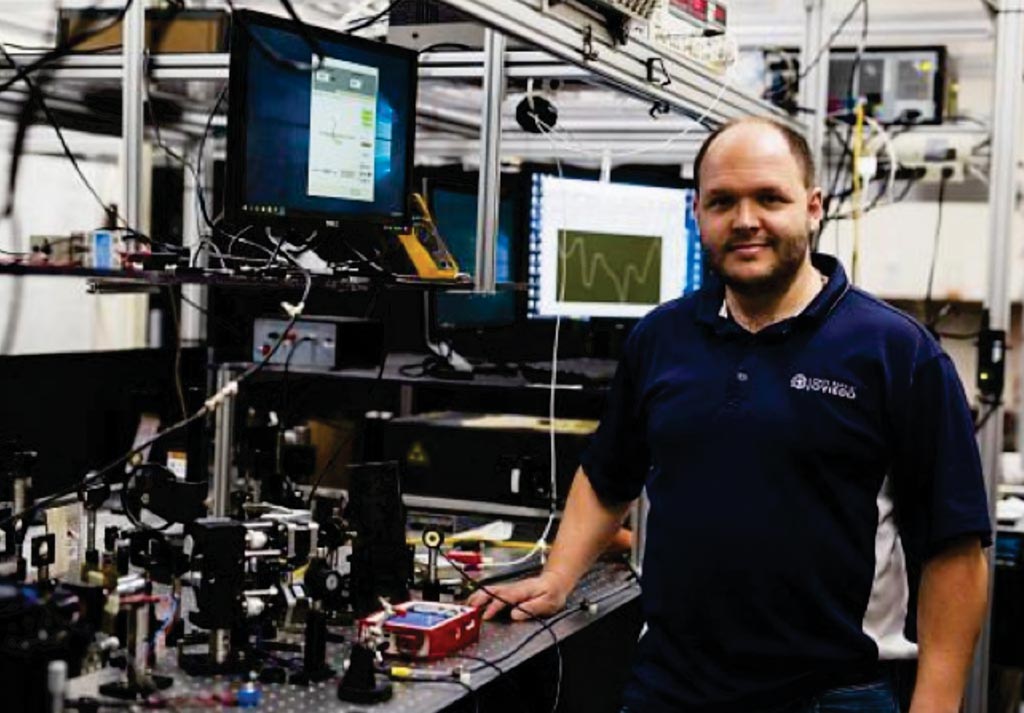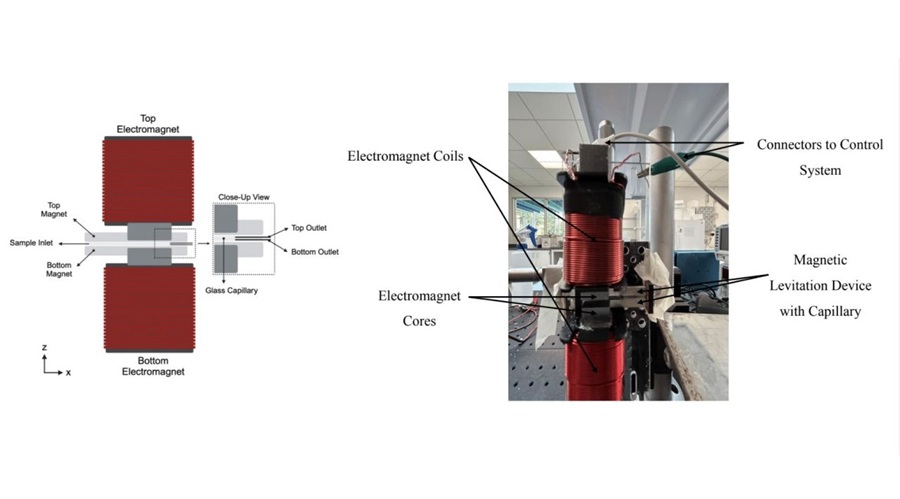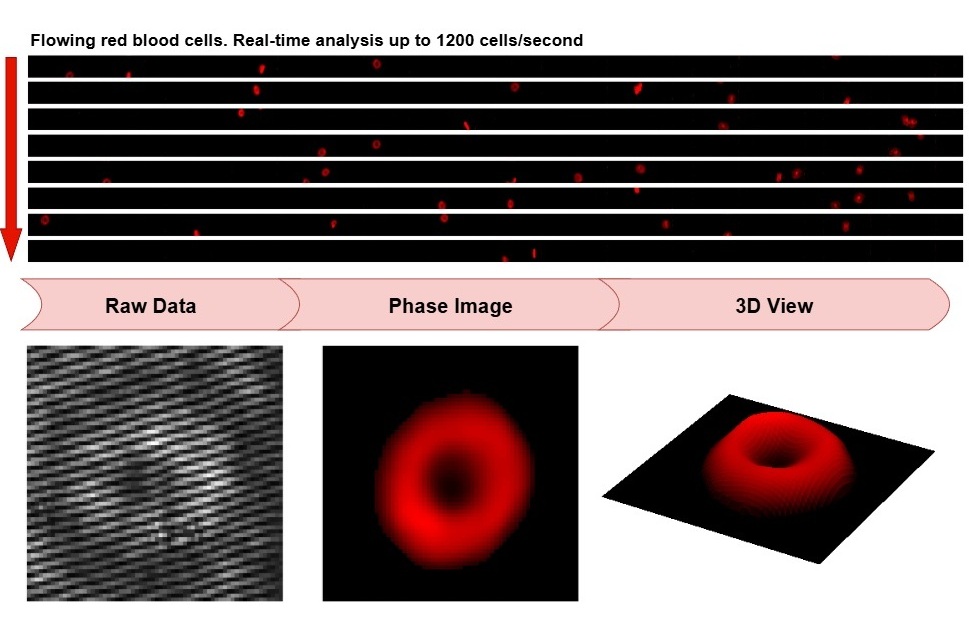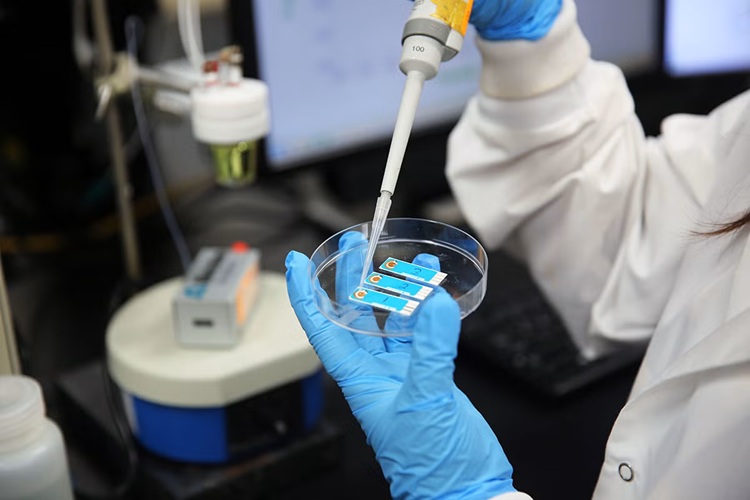Nanoparticles and Faraday Rotation Allow Faster Diagnoses
By LabMedica International staff writers
Posted on 02 Feb 2017
Magnetic nanoparticles that are coated with an antibody, then aligned in formation within a magnetic field and tallied under laser optics could lead to speedy diagnoses for infectious diseases.Posted on 02 Feb 2017
A clinically relevant magneto-optical technique, frequency-domain Faraday rotation spectroscopy (fd-FRS) for characterizing proteins using antibody-functionalized magnetic nanoparticles (MNPs) has been developed.

Image: Assistant Professor Shawn Putnam, PhD, of UCF\'s College of Engineering & Computer Science in his laboratory with the frequency-domain Faraday rotation spectroscopy (Photo courtesy of the University of Central Florida).
Bioengineers at the University of Central Florida developed the technique that distinguishes between the Faraday rotation of the solvent, iron oxide core, and functionalization layers of polyethylene glycol polymers (spacer) and model antibody–antigen complexes (anti-BSA/BSA, bovine serum albumin). The technique was combined with predictive analyte binding models quantifies (within an order of magnitude) the number of active binding sites on functionalized MNPs.
The scientists observed a detection sensitivity of ≈10 pg mL−1 and broad detection range of 10 pg mL−1 ≲ cBSA ≲ 100 µg mL−1. Comparative enzyme-linked immunosorbent assay (ELISA) studies are conducted, reproducing the manufacturer advertised BSA ELISA detection limits from 1 ng mL−1 ≲ cBSA ≲ 500 ng mL−1. In addition to the increased sensitivity, broader detection range, and similar specificity, fd-FRS can be conducted in less than 30 minutes, compared to four hours or so with an ELISA.
The authors say that other antigens and their unique antibodies could be substituted for the BSA protein used in the study, allowing medical tests for a wide array of infectious diseases. The proof of concept shows the method could be used to produce biochemical immunology test results in as little as 15 minutes, compared to several hours for ELISA, or enzyme-linked immunosorbent assay, which is currently a standard approach for biomolecule detection. The discovery, if commercialized, could lead to faster test results for human immunodeficiency virus (HIV), Lyme disease, syphilis, rotavirus and other infectious conditions. Shawn A. Putnam, PhD, an assistant professor and a co-author of the study said, “I see no reason why a variation of this technique couldn't be in every hospital throughout the world.” The study was published on January 16, 2017, in the journal Small.














